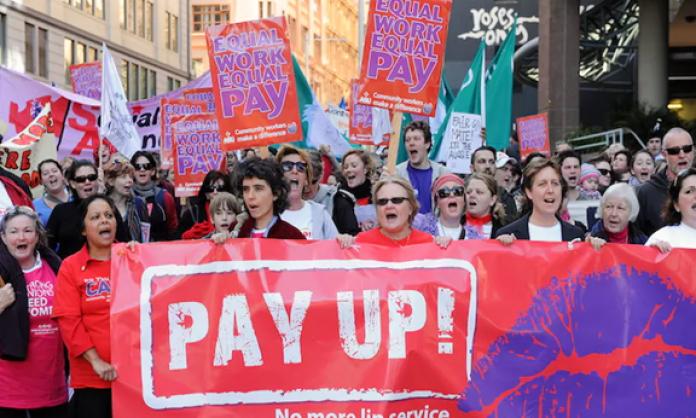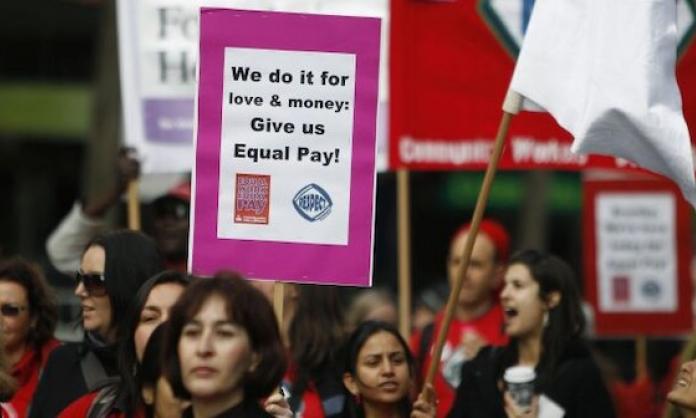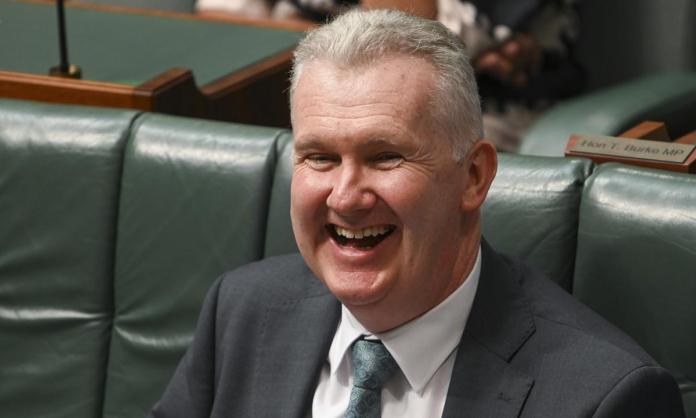Following in the footsteps of Tony Abbott and Julia Gillard, Malcolm Turnbull in 2016 declared himself a feminist. His attendances at subsequent champagne breakfasts with society’s elite on International Women’s Day have had noticeably greater vigour.
Aligned against such “feminists” are the increasingly psychotic men’s rights advocates who, incensed by the progress made toward sexual equality, want to reconstruct a lost golden age of apron-clad women confined to the kitchen and bedroom.
David Leyonhjelm recently became their new poster boy by stubbornly defending his misogynistic slurs against Sarah Hanson-Young. And Pauline Hanson’s One Nation has taken up their sexist campaign against the Family Court.
From this, one might assume either that women are extremely close to equality, with only a handful of disrespectful men standing in our way, or that things have gone too far, men now being the ones with legitimate grievances.
But women remain unequal by every measure.
A United Nations review of Australia’s compliance with the Convention on the Elimination of All Forms of Discrimination Against Women, to which Australia is a signatory, bears this out.
Multiple submissions to the review show that sexism is embedded in every institution of Australian society. The workforce is highly gender segregated, women continuing to earn less than men overall and taking greater responsibility for unpaid labour in the home.
Women are more likely than men to rely economically on their partners, families or welfare, the lack of autonomy making them more vulnerable to abuse and violence. Indigenous, migrant, refugee and incarcerated women fare particularly badly.
And the barrage of sexist media and advertising leaves no doubt as to the real situation of women in Australia.
Women at work
Nearly 50 years after we supposedly won equal pay, the gender pay gap in Australia persists. Among full time workers, it is 15.6 percent. On average, women earn $253.70 per week less than men – more than $26,000 per year.
The gap in superannuation is worse. Women retirees are on track to be 39 percent poorer than men by 2030.
The pay gap is not simply a product of women being concentrated in low paid and more stereotypically “feminine” industries such as child care and nursing. It persists even where men and women are employed in very similar work, including within female-dominated industries.
Women childcare workers, for example, are paid 32 percent less than men working in the same industry. Women pharmacists earn 34.4 percent less than their male counterparts.
Women can also suffer for having their jobs, which may be very similar to those of men, classified differently. For example, janitors, who are mostly men, are paid more on average than workers classified as cleaners, who are mostly women.
Unionisation offers some protection from inequality. The pay gap shrinks by 6 percent for workers on collective agreements or award wages. Better unionised industries, even male-dominated ones, also have smaller pay gaps. None of this stops the “feminist” politicians’ crusade to undermine unions, however.
Pay inequality is not the only factor underpinning sexism in the workplace.
The #MeToo moment has revealed sickening levels of sexual harassment and abuse, particularly carried out by men in positions of power. Australian workplaces are no different. A 2018 survey conducted on behalf of law firm Shine Lawyers found that more than one-third of women said that they had been harassed or discriminated against at work. The subordinate position of women in the workforce makes this sexist treatment more likely, and makes it harder for them to take action against it.
The family
A key aspect of women’s oppression is the role women are expected to play in the family. Gendered expectations about caring work, combined with women’s inferior position in the workforce, mean that women usually take time out of paid work to fulfil caring responsibilities, compounding their economic and social disadvantage compared to men.
Indeed, 62 percent of employed women with a child under five are in part time work, compared to 8.7 percent of men. The appalling level of parental leave makes the situation even worse. Fewer than half of employers offer paid parental leave.
Low welfare payments, a lack of affordable child care, inadequate abortion rights and sexist expectations all contribute to women’s unequal position. And their economic dependency on partners and their responsibility for children often make it difficult for women to leave abusive relationships.
This is particularly the case for women experiencing multiple forms of discrimination. Migrant women, for example, risk being deported if they leave abusive relationships while on certain temporary visas.
Single mothers also have a rough time. In 2013, then prime minister Julia Gillard, as she was receiving accolades for speaking against misogyny, cut single parent benefits, leaving the mostly female recipients $80 to $140 per week worse off.
The Liberals are now introducing more barriers and invasive requirements for single parents receiving much-needed income support.
The ubiquitous, self-congratulatory “feminism” of Australian politicians and bosses has done nothing to challenge the sexism and inequality women experience. The UN review’s findings should provide a much needed wake-up call.









